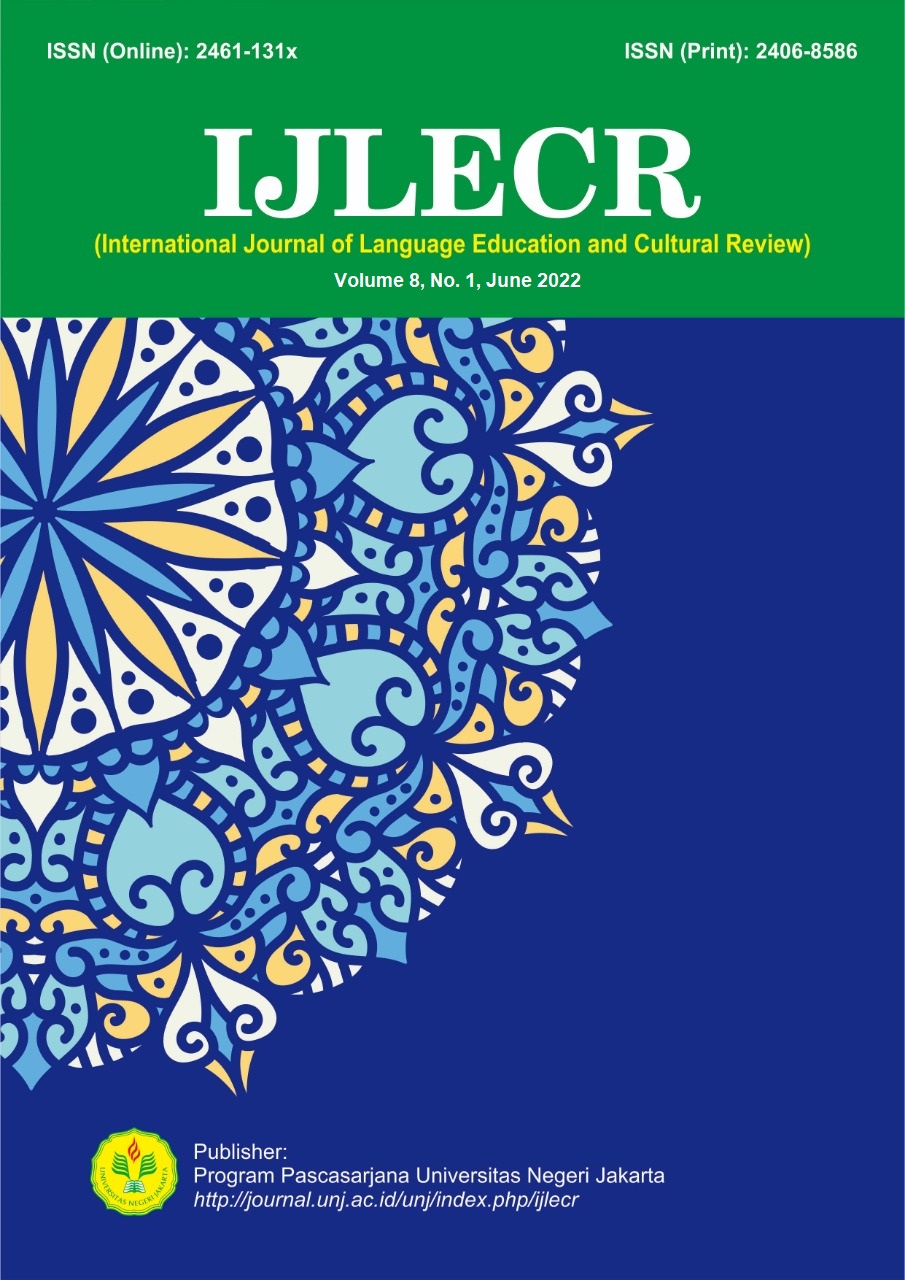THE IMPLEMENTATION OF CLL BY USING VOICE MEMO IN TEACHING SPEAKING
DOI:
https://doi.org/10.21009/IJLECR.081.08Keywords:
Community Language Learning (CLL); Speaking, Teaching Speaking; Voice MemoAbstract
Community Language Learning (CLL) is one of the methods in teaching language which involves the roles of the teacher as a counselor and the learner as the client in the language classroom. This research describes the implementation of Community Language Learning (CLL ) by using Voice Memo in teaching speaking, and the benefits as well as the obstacles of implementing CLL by using Voice Memo in teaching speaking. This research was conducted at SMA Negeri 1 Warungkondang, the participants were 30 students and a teacher. The research used qualitative method which employed several techniques in collecting the data those are classroom observation, questionnaire, and interview. The finding shows that CLL could be implemented with some adjustments from the teacher, in this case the teacher implemented six stages, those were grouping and translating, recording, collecting and transcribing, listening and correcting, repeating, and tasking. The learning process in the classroom indicates that the teacher and students were equal, in other words, the teacher was not the center. There were many benefits of CLL including communicative and active activity, students have more self initiative and self confidence to use their own English, they were enthusiastic in class when they were using their phone as a tool in learning process. However the researcher found out several obstacles in CLL implementation in the clasroom such as classroom environment (e.g. noisy), students’ less interest in English, and lack of facilities to support CLL. The result of those finding indicates that CLL can be one of the alternative in teaching speaking, however the school needs to support facilities.
References
Brown, H. D. (2001). Teaching by Principles an Interactive Approach to Language Pedagogy (second). Longman.
Creswell, J. W. (2009). Research Design Qualitative, quantitative, and Mixed Methods Approaches (third edit). SAGE Publication.
Flower, L., & Hayes, J. R. (2008). A cognitive process theory of writing. College Composition and Communication, 32(4), 365-387. https://www.jstor.org/stable/356600
Huang, S. (2016). Communicative Language Teaching : Practical Difficulties in the Rural EFL Classrooms in Taiwan. Journal of Education and Practice, 7(24), 186–202. https://www.iiste.org/Journals/index.php/JEP/article/view/32615
Musthachim, A. (2014). Students’ Anxiety in Learning English. The State Islamic University Syarif Hidayatullah Jakarta.
Nurhasanah, S. (2015). The Use of Community Language Learning Method to Increase the Students’ Participation in Classroom Conversation. REGISTER, 8(1), 81–98.
Parvin, R. H. (2015). The Effectiveness of Using Technology in English Language Classrooms in Government Primary Schools in Bangladesh the Effectiveness of Using Technology in English Language Classrooms in. FIRE - Forum for International Research in Education, 2(1), pp. 47–59.
Sari, N. K., & Syarfi, M. (2017). The Use of Community Language Learning Method to Improve Speaking Ability of The Second Year Students of SMP Muhammmadiyah 2 Pekanbaru. Riau University.
Ulfah, R., Apriliaswati, R., & Arifin, Z. (2015). The Implementation of Communicative Language Teaching Approach in Teaching Speaking. Jurnal Pendidikan dan Pembelajaran Khatulistiwa (JPPK), 4(1), 1–17. https://jurnal.untan.ac.id/index.php/jpdpb/article/view/8712








